If you are one of those people who love cooking, then it is highly likely that you spend a good amount of time in your kitchen. However, with all the hustle and bustle of cooking, cleaning up after can be quite a daunting task. Moreover, if you have hardwood floors in your kitchen, this task becomes even more challenging as they require special care and attention. In this guide, we will explore some tips and tricks on how to protect hardwood floors in kitchen.
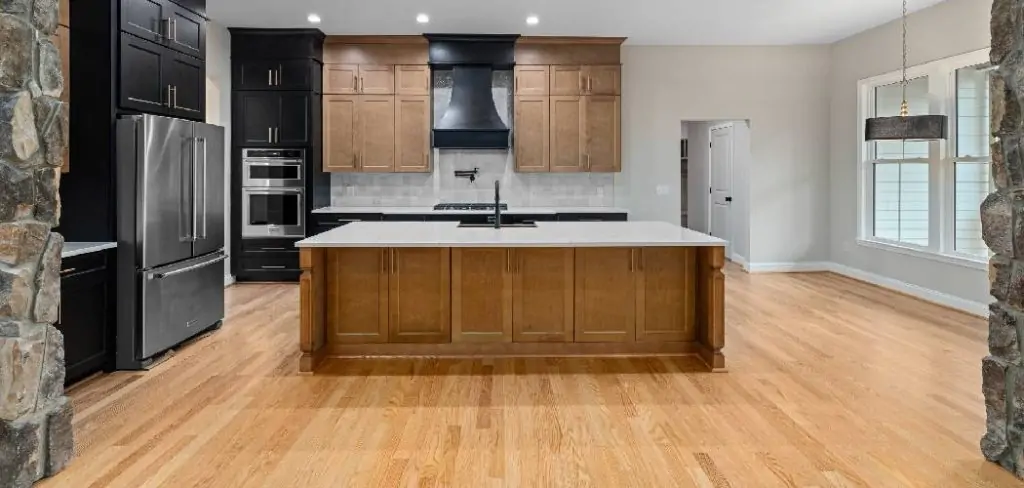
10 Essential Ways of How to Protect Hardwood Floors in Kitchen
Hardwood floors in the kitchen add warmth and charm but also face unique challenges from spills, foot traffic, and heavy appliances. With the right approach, you can ensure those beautiful floors stay pristine for years. Here are ten essential tips to keep your hardwood kitchen floors looking flawless:
1. Regular Cleaning Routine
Start by developing a weekly (or more frequent) cleaning routine for your kitchen floors. Daily sweeping or dust mopping will prevent dirt and wood-specific cleaner can prevent buildup of grime. Always make sure the mop is only slightly damp to protect the wood from excessive moisture. Use a dry towel to clean up spills immediately to avoid water seeping into the wood, which can cause stains or warping. For deeper cleaning, consider a pH-neutral, non-toxic cleaner designed for hardwood floors to maintain the integrity of the wood and its finish without leaving residue.
2. Mats and Rugs
Strategic placement of mats and rugs can significantly reduce wear on your hardwood. Position a cushioned, non-slip rug near the sink and high-traffic areas to minimize the overall wear and tear. Make sure rugs have a breathable, non-abrasive backing to avoid damaging the hardwood underneath. Regularly clean the rugs to ensure they don’t become a source of dirt themselves.
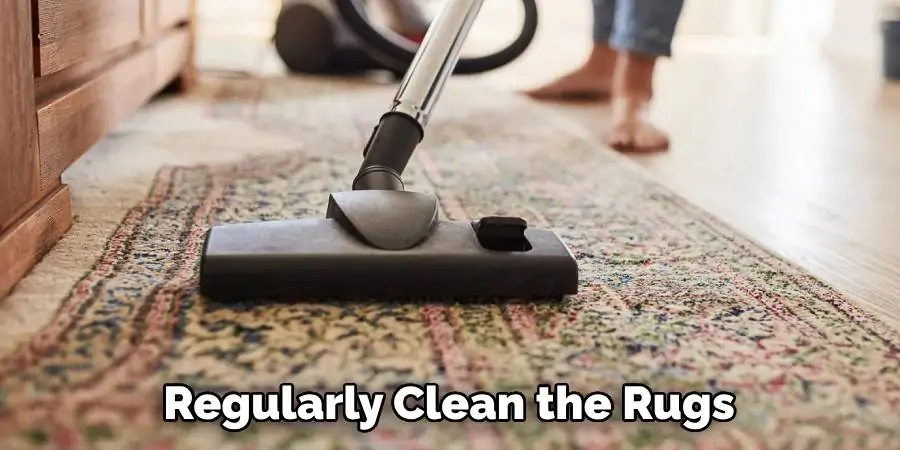
3. Wipe Up Spills Immediately
Spills are inevitable in the kitchen, but swift action can prevent them from damaging your hardwood. Keep a clean towel or mop nearby and promptly wipe up any spills to avoid moisture seeping through the wood’s cracks, leading to warping and discoloration. Always blot rather than wipe to get the liquid up without spreading it around. For sticky or larger spills, use a cleaner appropriate for hardwood to remove any residue without damaging the finish. Remember that quick attention to spills not only protects your floors but also helps maintain a hygienic kitchen environment.
4. Use Furniture Pads
Using furniture pads is an essential step in protecting your hardwood floors from scratches and dents caused by heavy kitchen furniture. Attach felt pads to the bottom of chairs, tables, and any movable items to help distribute their weight more evenly. This precaution not only helps to prevent unsightly marks but also eases the sliding of furniture across the floor, reducing the effort needed to move it for cleaning purposes. Make sure to replace these pads regularly as they can wear down or accumulate grit which could be harmful to the floor surface.
5. Barefoot or Soft Sole Policy
Enforce a no-high-heel policy and discourage the use of shoes with hard soles on the hardwood. Wearing slippers, socks, or soft-soled shoes around the kitchen will minimize the risk of scuff marks and surface damage. Guests should be informed of this practice, as well, ensuring that the integrity of the floors is upheld by all who enter the space. This approach adds a layer of care that complements the aforementioned maintenance tips, contributing to the longevity and pristine condition of your hardwood flooring.
6. Adjust Appliance Weight
Heavy appliances like refrigerators and stoves can cause significant damage if not installed or moved properly. Ensure they are fitted with weight-distributing glides or wheels designed to spread their load effectively. When it’s necessary to move these appliances for cleaning or other purposes, always lift rather than drag them to avoid gouging or scratching your floors. If lifting is not an option, use plywood or a similar protective path to roll appliances across to their new location, ensuring that your hardwood floors remain unscathed.
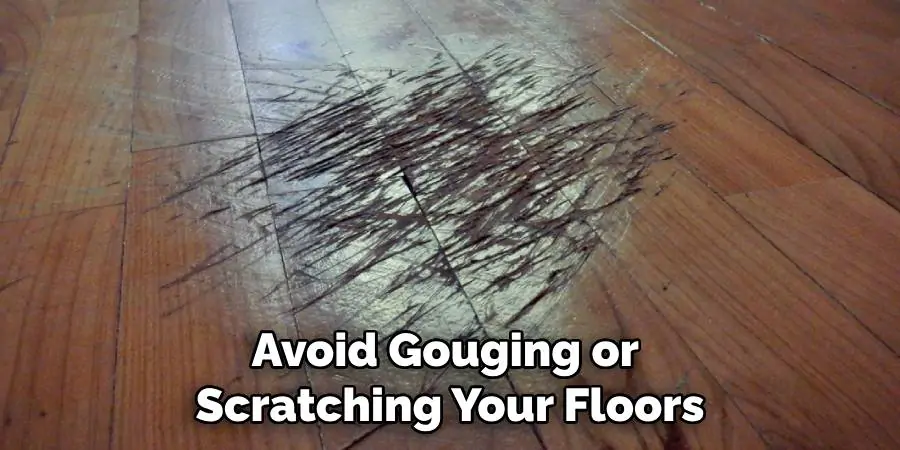
7. Choose a Durable Finish
Applying a robust finish to your hardwood floors is a proactive measure to shield them against the common hazards found in the kitchen environment. Kitchen-specific finishes are formulated to resist moisture and heat, essential characteristics given the likelihood of spills and fluctuating temperatures. Opting for a high-quality polyurethane coating, for example, can provide a resilient barrier against stains and wear, while also lending a glossy or matte aesthetic to match your kitchen’s design. Remember, the proper finish not only preserves the wood’s beauty but also extends its life, ensuring your kitchen remains a welcoming and warm heart of the home for years to come.
8. Avoid Common Pitfalls
Certain cleaning materials and home remedies can actually harm hardwood floors. Steer clear of abrasive cleaners, ammonia, and oil soaps, as they can strip the finish or dull the wood. Vinegar, though popular, is acidic and can damage the finish, so use it sparingly or not at all. It’s better to stick to a pH-neutral floor cleaner specifically designed for hardwood surfaces. Additionally, avoid excessive water when mopping, as it can seep into seams or cracks and cause warping or swelling of the wood. Instead, opt for a damp mop or cloth, and promptly dry any moisture that remains on the surface. By being cautious with cleaning supplies and methods, you can help preserve the longevity and appearance of your hardwood floors.
9. Maintain Humidity Levels
Fluctuating humidity levels can cause your hardwood to expand and contract, leading to gaps or warping. Invest in a humidifier or dehumidifier to control the atmosphere, especially if you live in an area with severe climate changes. This consistency will help maintain the integrity of your kitchen floors. Maintain the indoor humidity levels between 30% and 50% to ensure minimal expansion and contraction of the wood. Not only does this step protect the structural aspect, but it also contributes to a more comfortable living environment for you and your family. Regular monitoring with a hygrometer can help you keep track of the levels and manage your home’s climate effectively.
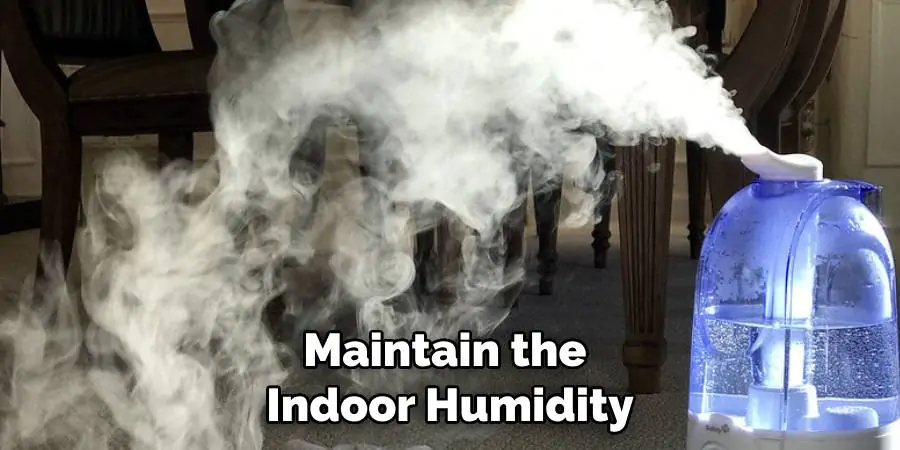
10. Schedule Regular Maintenance
Just like with regular health check-ups, your hardwood floors require professional attention to ensure their longevity. Schedule an annual inspection with a flooring specialist to identify potential problems such as minor scratches, dents, or moisture damage before they escalate. This early intervention can prevent costly repairs or replacements in the future. A specialist can also reapply a topcoat or polish if necessary, rejuvenating your floors and providing an extra layer of protection against everyday wear and tear. By staying ahead with maintenance, you can keep your floors looking pristine for years to come.
Frequently Asked Questions
Is It Ok to Put Hardwood Floors in a Kitchen?
The kitchen, often referred to as the heart of the home, has seen a surge in design trends that marry functionality with aesthetic appeal. One question that surfaces in the minds of homeowners and designers alike is whether it is prudent to lay hardwood floors in this high-traffic, spill-prone environment. While some may caution against the potential wear and tear, let us consider the allure of hardwood’s warmth underfoot and its ability to visually bind a living space.
With the right type of wood and finish, coupled with a steadfast commitment to maintenance, placing hardwood floors in a kitchen not only adds an element of natural beauty but also can be a durable option over time. The trick lies in knowing how to protect hardwood floors in kitchen—from employing area rugs that catch splashes and spills, to opting for mats near the sink and stove, to the regular cleaning that preserves the wood’s integrity. As we assess the suitability of hardwood floors in our culinary havens, we must not overlook the power of prevention and the simple yet effective strategies that safeguard our cherished investment.
How Do You Take Care of Hardwood Floors in the Kitchen?
To take care of hardwood floors in the kitchen, it is important to sweep or vacuum regularly to remove any dirt or debris. Wipe up spills immediately to prevent moisture damage, and avoid using harsh chemicals or abrasive cleaners. Follow recommended maintenance steps such as using rugs or mats near high traffic areas and maintaining proper indoor humidity levels.
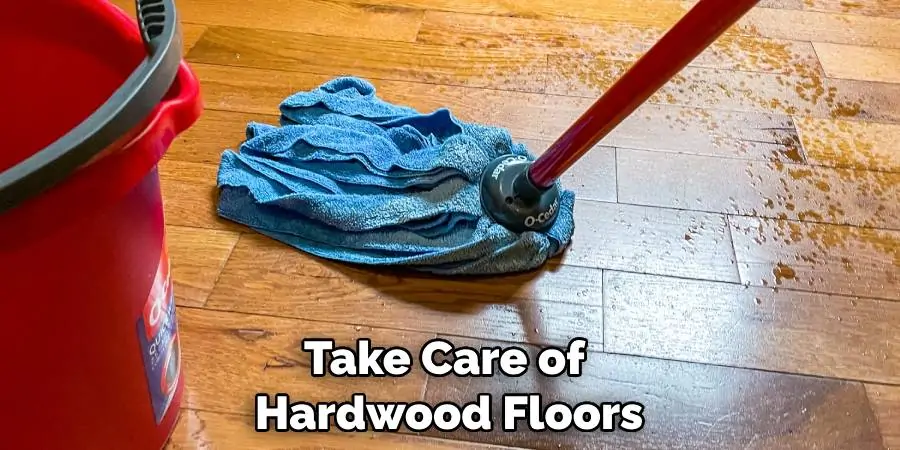
How Do You Seal Wood Floors in a Kitchen?
To seal wood floors in a kitchen, first make sure the surface is clean and dry. Then, apply a high-quality polyurethane sealer using a paintbrush or roller, making sure to follow the manufacturer’s instructions. Allow the sealer to dry completely before adding another coat if desired.
Conclusion
In this Conclusion, we explored the benefits of using hardwood floors in the kitchen and discussed how to protect hardwood floors in kitchen. We also learned about sealing wood floors for added protection. By following these simple tips and taking preventive measures, you can ensure that your hardwood floors will stay beautiful and functional for years to come. Whether you’re cooking up a storm or enjoying a quiet meal with family and friends, your kitchen’s hardwood floors will continue to be a timeless and stylish addition to your home. Remember, prevention is key when it comes to maintaining the beauty of hardwood floors in the kitchen. Happy cooking!
